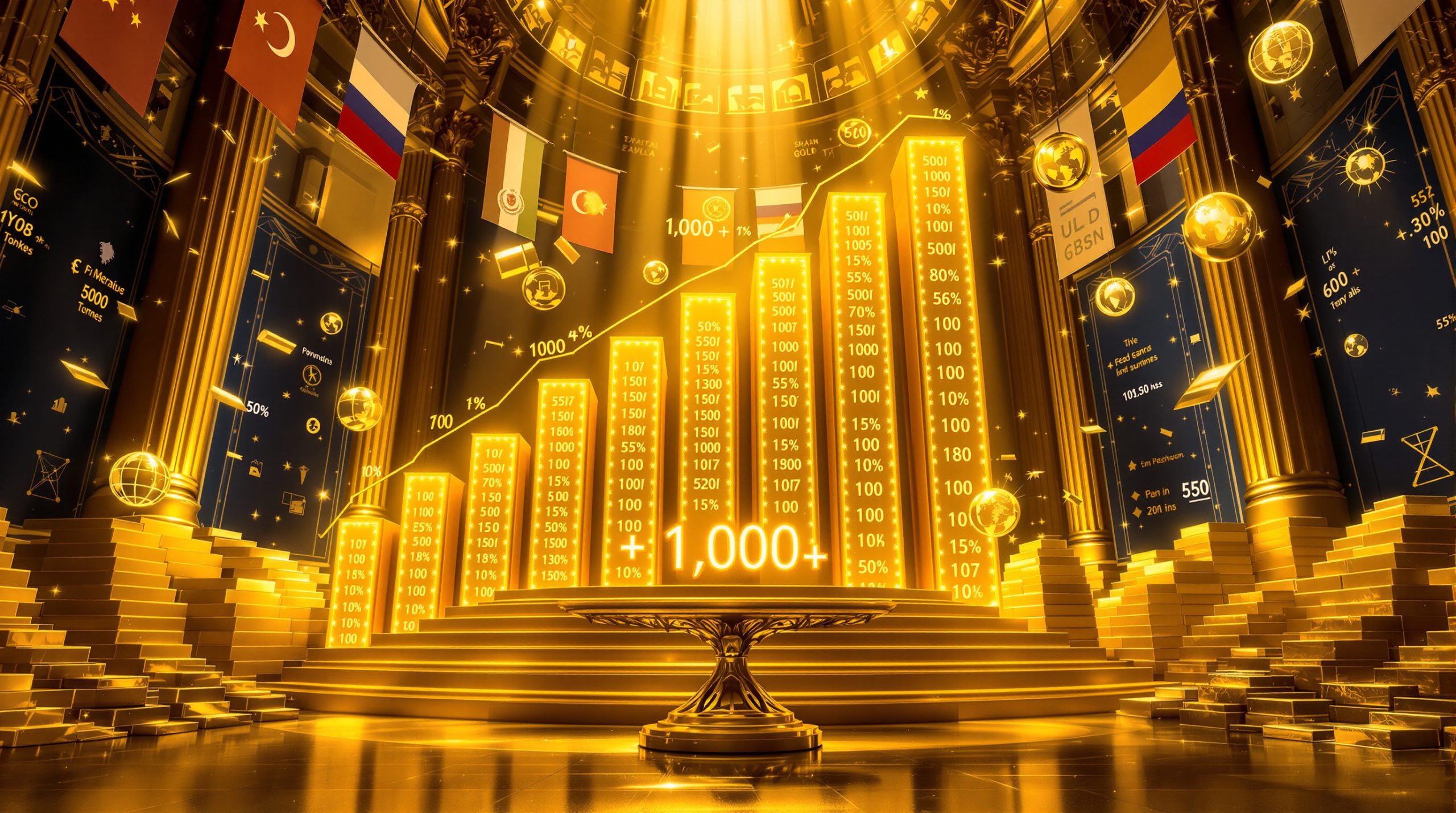What Are Rare Earth Elements and Why Do They Matter?
Rare earth elements (REEs) comprise a group of 17 metallic elements on the periodic table, including the 15 lanthanides plus scandium and yttrium. Despite their name, most REEs are relatively abundant in the Earth's crust. What makes them "rare" is the scarcity of concentrated deposits that are economically viable for extraction and processing.
These elements possess unique magnetic, luminescent, and electrochemical properties that make them indispensable in modern technology. From smartphones and electric vehicles to missile guidance systems and wind turbines, REEs are the invisible enablers of our technological world.
The Critical Role of Rare Earth Elements in Modern Technology
The importance of REEs in modern technology cannot be overstated. They serve as essential components in numerous high-tech applications:
-
Electronics: Neodymium creates powerful magnets for speakers and hard drives, while europium and terbium provide red and green colors in screens and displays.
-
Renewable Energy: Each wind turbine requires approximately 2 tonnes of rare earth magnets, primarily neodymium, praseodymium, and dysprosium, to generate electricity efficiently.
-
Defense Systems: Military applications depend heavily on REEs, with each F-35 fighter jet containing nearly 430 kilograms of rare earth materials. A single Virginia-class submarine requires approximately 9 tonnes of rare earth materials.
-
Advanced Manufacturing: Cerium is used as a polishing agent for precision optical components, while lanthanum is crucial for petroleum refining catalysts.
The transition to green energy technologies has dramatically increased demand for these elements. Energy transition minerals require up to 1 kilogram of neodymium per vehicle—significantly more than conventional vehicles. This growing dependency creates strategic vulnerabilities for nations without domestic REE supplies.
"Rare earths are the vitamins of modern manufacturing—used in small amounts but absolutely essential for technological performance," notes Dr. Julie Adams, materials scientist at MIT.
China's Dominant Position in the Global Rare Earth Market
China's control over the rare earth supply chain represents one of the most concentrated resource monopolies in modern history. According to the U.S. Geological Survey, China currently controls approximately 70% of global rare earth mining and an overwhelming 90% of refining capacity.
This dominance didn't occur by accident. In the 1980s, while Western nations largely ignored REEs as niche materials, China recognized their strategic potential. As Deng Xiaoping famously stated in 1992, "The Middle East has oil, China has rare earths."
Through decades of strategic planning, state subsidies, and environmental deregulation, China developed a near-monopoly across the entire value chain:
-
Mining: The Bayan Obo mine in Inner Mongolia alone produces 45% of the world's light rare earth elements.
-
Processing: China handles approximately 95% of dysprosium production, a critical element for permanent magnets.
-
Manufacturing: Chinese companies hold over 60 international patents related to rare earth mining and processing technologies.
-
Expertise: China has cultivated over 300,000 engineers specialized in rare earth metallurgy, creating a formidable knowledge advantage.
This end-to-end control gives China extraordinary leverage in international trade negotiations—leverage it has begun to exercise more aggressively through China's rare earth export restrictions.
How Significant Was China's Recent Export Restriction?
China's latest rare earth export data reveals a strategic shift that has sent shockwaves through global supply chains. The timing and magnitude of these restrictions suggest deliberate policy rather than market-driven fluctuations.
May 2025 Trade Data Reveals Dramatic Export Decline
Recent customs data paints a concerning picture for international markets dependent on Chinese rare earth supplies:
- Export value plummeted 48.3% year-on-year to just $18.7 million in May 2025
- A significant 13.7% month-on-month decline from April's $21.7 million
- Export volume fell by 5.67% to 5,864.6 tonnes, ending three consecutive months of growth
- Despite these declines, cumulative January-May exports remained up 2.3% at 24,827 tonnes
These figures represent more than routine market fluctuations. The dramatic divergence between value and volume declines suggests targeted restrictions on specific high-value rare earth elements critical to advanced manufacturing and defense applications.
Industry analysts note that previous months showed consistent growth in both volume and value, making May's sharp reversal particularly noteworthy. The timing coincides with escalating US–China trade impacts and tensions between China and Western nations.
Price-Volume Disparity Signals Strategic Export Control
The most telling aspect of these export figures is the stark disparity between value decline (48.3%) and volume decline (5.67%). This 42.6 percentage point gap reveals China's sophisticated approach to resource leverage.
"China appears to be selectively restricting exports of the highest-value rare earth elements—likely heavy rare earths like dysprosium and terbium—while maintaining reasonable volumes of less critical elements," explains Dr. Margaret Chen, resource economist at Stanford University.
This strategic approach achieves multiple objectives:
-
Maximum Economic Impact: By targeting high-value REEs, China creates significant cost pressures on advanced manufacturing while minimizing disruption to basic industries.
-
WTO Compliance: Maintaining overall export volumes helps China argue that no formal quotas exist, potentially avoiding WTO violations.
-
Stockpile Management: Selective restrictions allow China to manage its own strategic reserves of the most critical elements.
The market response has been swift, with spot prices for dysprosium oxide jumping 27% in a single week following the export data release. Manufacturers of precision electronics, electric vehicle motors, and defense components now face difficult decisions about inventory management and potential redesigns to reduce dependency.
Why Is China Implementing These Export Controls?
China's decision to restrict rare earth exports represents a calculated geopolitical strategy rather than simple economic protectionism. Understanding the multifaceted motivations behind these controls is essential for predicting future trade patterns.
Geopolitical Leverage in US-China Relations
The timing of China's export restrictions speaks volumes about their intended purpose. These measures coincide directly with heightened bilateral tensions and upcoming trade negotiations with the United States.
As Charles Chang, professor of international trade at Fudan University, aptly noted: "Usually, it's the guy with the sought-after resource who has leverage." This straightforward observation captures China's strategic calculation—rare earths represent the "ultimate trump card" in trade disputes with technology-dependent nations.
Historical precedent supports this interpretation. During a 2010 territorial dispute with Japan, China implemented similar restrictions, causing rare earth prices to surge by 300-500%. The lesson was clear: control of critical minerals translates directly to geopolitical power.
The current restrictions appear calibrated to demonstrate potential consequences without triggering immediate retaliation:
- Signaling Intent: Showing the capability to disrupt supply chains without fully exercising that power
- Creating Uncertainty: Generating anxiety among manufacturers about future availability
- Establishing Negotiating Position: Setting the stage for potential concessions in other trade areas
This approach reflects China's increasingly sophisticated understanding of economic statecraft—using targeted resource controls rather than blunt trade barriers.
Economic and Industrial Policy Considerations
Beyond geopolitics, China's export restrictions align with its long-term industrial strategy. The country's 14th Five-Year Plan and "Made in China 2025" initiative both emphasize moving up the value chain in strategic industries.
Rather than exporting raw materials, China aims to:
-
Capture More Value Domestically: By processing rare earths into finished components like magnets, motors, and batteries, China retains more economic value—potentially 10-15 times what raw exports would generate.
-
Develop Technological Leadership: Restricting raw material exports forces domestic manufacturers to innovate in material efficiency and substitution.
-
Create Supply Chain Dependencies: As foreign manufacturers relocate to China to secure rare earth access, knowledge transfer accelerates.
-
Ensure Long-Term Resource Security: China's own rare earth reserves, while substantial, are finite. Current estimates suggest domestic mines could be depleted within 15-30 years at current extraction rates.
China's Ministry of Industry and Information Technology has explicitly stated that rare earths are "strategic resources" to be managed for national development, not merely commodities for international markets.
"China is executing a decades-long strategy to transform from the world's raw material supplier to its high-tech manufacturing center," explains Dr. Wei Zhang, industrial policy specialist at Beijing University. "Rare earth export controls are one component of this broader vision."
How Vulnerable Is the US Supply Chain to Chinese Restrictions?
The United States faces particular vulnerability to China's rare earth strategy, with critical dependencies across multiple sectors of the economy and national security apparatus.
Critical Dependencies in US High-Tech Manufacturing
America's rare earth dependency represents one of its most significant supply chain vulnerabilities. According to the U.S. Geological Survey, in 2024 the United States imported approximately 80% of its rare earth requirements directly or indirectly from China—a stark example of strategic resource dependency.
This vulnerability extends across major economic sectors:
-
Automotive: Electric vehicles require approximately 1kg of neodymium per motor, with U.S. manufacturers planning to produce 2.5 million EVs annually by 2027.
-
Electronics: Consumer electronics manufacturers rely on Chinese-processed rare earths for components in everything from smartphones to medical devices.
-
Renewable Energy: The Biden administration's clean energy targets depend on rare earth magnets for wind turbines and energy storage systems.
-
Advanced Manufacturing: Precision equipment for semiconductor production requires rare earth components, creating a double vulnerability in the chip supply chain.
The timeline for potential disruption varies by industry and inventory levels. Most manufacturers maintain 3-6 month reserves of critical materials, but sustained restrictions would create production bottlenecks by late 2025. The semiconductor industry, already facing chip shortages, would likely experience impacts within 2-3 months.
"U.S. manufacturers have built global supply chains optimized for cost and efficiency, not resilience," notes Dr. Sarah Johnson, supply chain researcher at MIT. "Rare earth dependencies represent the Achilles' heel of this system."
Strategic Vulnerabilities in the Defense Sector
Perhaps most concerning are the implications for national security. The Department of Defense depends on rare earth elements for numerous critical systems:
- Precision Guidance: Each Tomahawk missile contains approximately 3.5kg of rare earth materials
- Radar Systems: Phased array radars use rare earth magnets for precise electromagnetic control
- Night Vision: Lanthanum and gadolinium are essential for advanced optical systems
- Communications: Satellite systems rely on rare earth components for signal processing
A 2023 Pentagon assessment classified rare earth dependency as a "severe strategic vulnerability" requiring urgent mitigation. Yet developing alternatives faces significant challenges:
- Technical Complexity: Substituting rare earth materials often results in performance degradation
- Regulatory Hurdles: Domestic mining projects face extensive environmental reviews
- Processing Gap: Even with domestic mines, the U.S. lacks commercial-scale separation facilities
- Expertise Shortage: Decades of outsourcing have eroded domestic knowledge of rare earth metallurgy
The Defense Logistics Agency has established a modest stockpile of critical materials, estimated to cover approximately 6-8 months of military requirements in case of severe supply disruption. However, this provides only a short-term buffer against extended restrictions.
"We've allowed a foreign power to control materials essential to our national defense," warned General James Richardson, former commander of U.S. Army Materiel Command. "This represents a strategic miscalculation that will take years to correct."
What Are the Global Implications of China's Rare Earth Strategy?
China's rare earth export controls have implications far beyond bilateral relations with the United States, potentially reshaping global trade patterns and technological development trajectories.
Impact on International Trade Relations
China's resource leverage strategy raises fundamental questions about global trade governance and the World Trade Organization's ability to address strategic resource controls.
Previous Chinese rare earth restrictions led to a successful WTO challenge in 2014, when the organization ruled against export quotas. However, China has since developed more sophisticated approaches that may technically comply with WTO rules while achieving similar outcomes:
- Environmental Regulations: Justifying production limits through ecological protection measures
- Consolidation: Merging companies to control output without formal export quotas
- Licensing Requirements: Implementing complex permitting processes that effectively limit exports
These measures create uncertainty in international markets and challenge the post-1945 liberal trade order's fundamental assumptions about resource access.
The European Union, Japan, and South Korea—all heavily dependent on rare earth imports—have responded with a mix of diplomatic pressure and diversification efforts. The EU has designated European critical materials requiring supply chain resilience measures, while Japan has invested over $2 billion in alternative sourcing since 2010.
"China's rare earth strategy represents a new model of resource nationalism that traditional trade rules weren't designed to address," observes Dr. Elena Romanova, international trade specialist at the London School of Economics.
Price Effects Across Global Supply Chains
The economic impact of China's export restrictions ripples through complex global supply chains, affecting both immediate buyers and downstream manufacturers.
Direct price effects are already evident:
- Dysprosium oxide prices have increased 27% since restrictions began
- Terbium oxide has seen a 19% price increase
- Neodymium-praseodymium (NdPr) alloy prices rose 15% in anticipation of further controls
These price increases translate to higher costs for manufacturers of:
- Electric Vehicles: Tesla estimates a $180-240 cost increase per vehicle if current prices persist
- Wind Turbines: General Electric projects 3-5% cost increases for permanent magnet generators
- Consumer Electronics: Apple suppliers report 1-2% component cost increases across product lines
The full impact depends on how manufacturers respond. Options include:
- Absorbing Costs: Reducing profit margins to maintain pricing
- Passing Costs to Consumers: Increasing final product prices
- Redesigning Products: Reducing rare earth content where possible
- Relocating Production: Moving manufacturing to China to secure supply access
This last option—relocating production to China—may be China's ultimate goal, as it accelerates technology transfer and domestic value capture. Several European and Japanese manufacturers have already announced new Chinese facilities to ensure rare earth access.
"The rare earth price premium essentially functions as an incentive for foreign companies to bring their manufacturing knowledge to China," explains Dr. Michael Wong, supply chain economist at Singapore Management University. "It's a sophisticated form of industrial policy."
How Are Countries Responding to China's Rare Earth Dominance?
The recognition of rare earth vulnerability has triggered diverse response strategies from major economies, ranging from immediate diversification efforts to long-term technological solutions.
Diversification Strategies by Major Economies
Countries dependent on rare earth imports are pursuing multi-faceted approaches to reduce their vulnerability:
The United States has implemented a three-pronged strategy:
-
Domestic Revival: The 2022 Critical Minerals Security Act allocated $2.7 billion for domestic rare earth development, including the reopening of the Mountain Pass mine in California.
-
Strategic Partnerships: The U.S.-Australia Critical Minerals Agreement facilitates investment in Australian rare earth projects, while similar frameworks are being negotiated with Canada and Brazil.
-
Defense Stockpiling: The Pentagon has expanded its National Defense Stockpile to include additional rare earth materials, with appropriations for $817 million in purchases over five years.
Japan, following its 2010 supply crisis, has developed perhaps the most advanced diversification program:
- Invested $1.2 billion in the Australian Lynas Corporation, securing dedicated supply
- Developed recycling technologies recovering up to 80% of rare earths from used electronics
- Created a national stockpile sufficient for approximately 60 days of industrial consumption
- Funded research on reduced-rare-earth motor designs, achieving 40% reduction in some applications
The European Union has adopted a collective approach through its European Raw Materials Alliance, which coordinates:
- Resource mapping across member states
- Joint ventures in Greenland and Norway for rare earth development
- Standardized recycling protocols for rare earth recovery
- Research funding for substitute materials and technologies
These efforts have begun to shift global production patterns, with China's share of mining output declining from 95% in 2010 to approximately 70% in 2024. However, processing capacity remains overwhelmingly concentrated in China.
Emerging Rare Earth Projects Worldwide
New mining and processing projects are emerging globally, though most face significant technical and financial challenges:
Australia has positioned itself as the leading alternative supplier:
- Lynas Corporation operates the Mount Weld mine and Malaysian processing facility, producing approximately 7,000 tonnes annually
- Iluka Resources is developing a $1.2 billion integrated rare earth processing facility in Western Australia
- Northern Minerals is advancing the Browns Range project targeting heavy rare earths like dysprosium
Australia's strategic reserve of critical minerals has become increasingly important as the country positions itself as a reliable alternative to Chinese supplies.
North America has several promising developments:
- MP Materials has re
Ready to Invest in the Next Major Mineral Discovery?
Discover why rare earth elements and other critical mineral discoveries can lead to significant market returns with Discovery Alert's proprietary Discovery IQ model, which instantly notifies investors of significant ASX mineral announcements and transforms complex data into actionable insights. Visit the Discovery Alert discoveries page to explore historic examples of exceptional investment outcomes and begin your 30-day free trial today.




